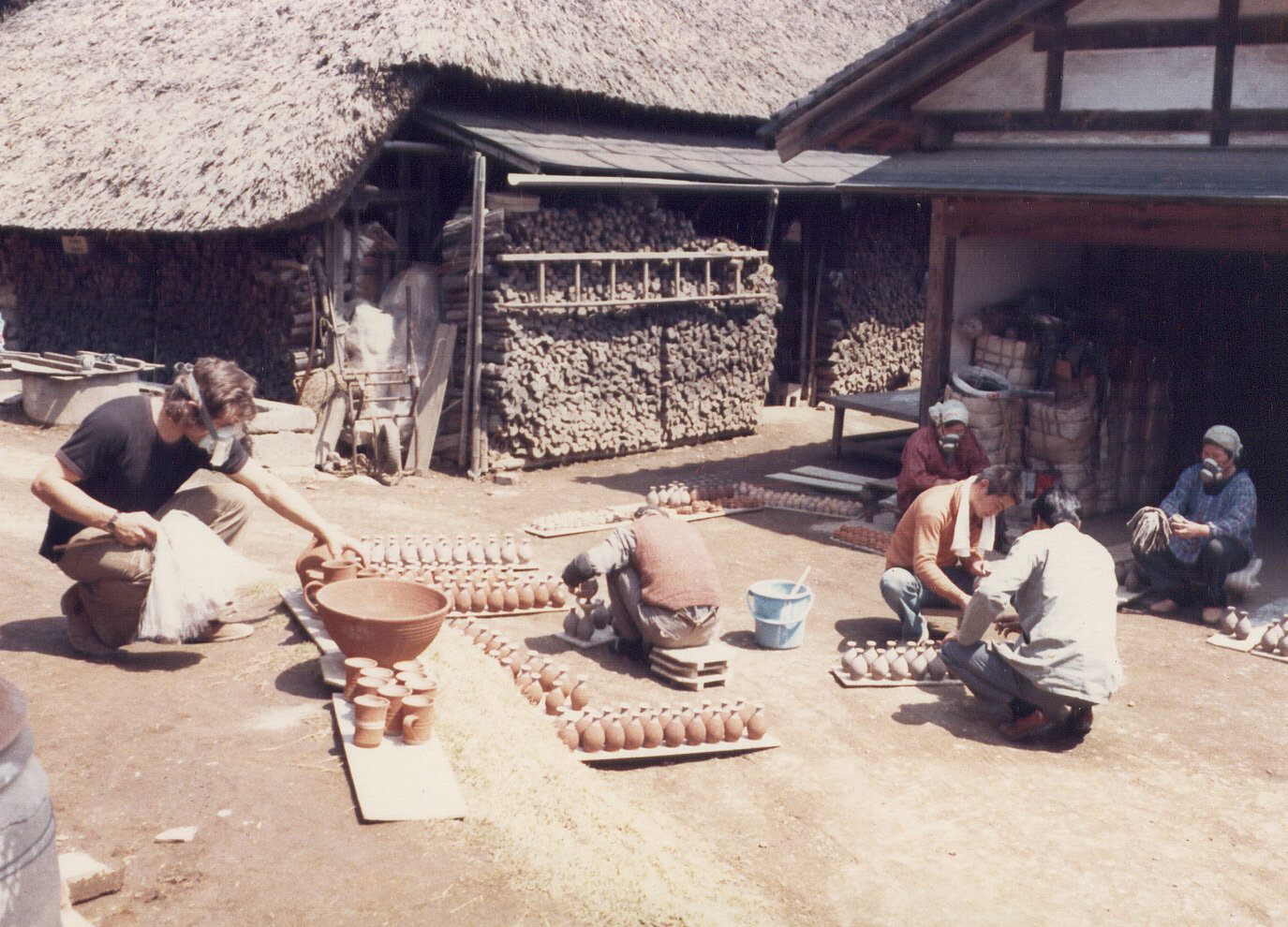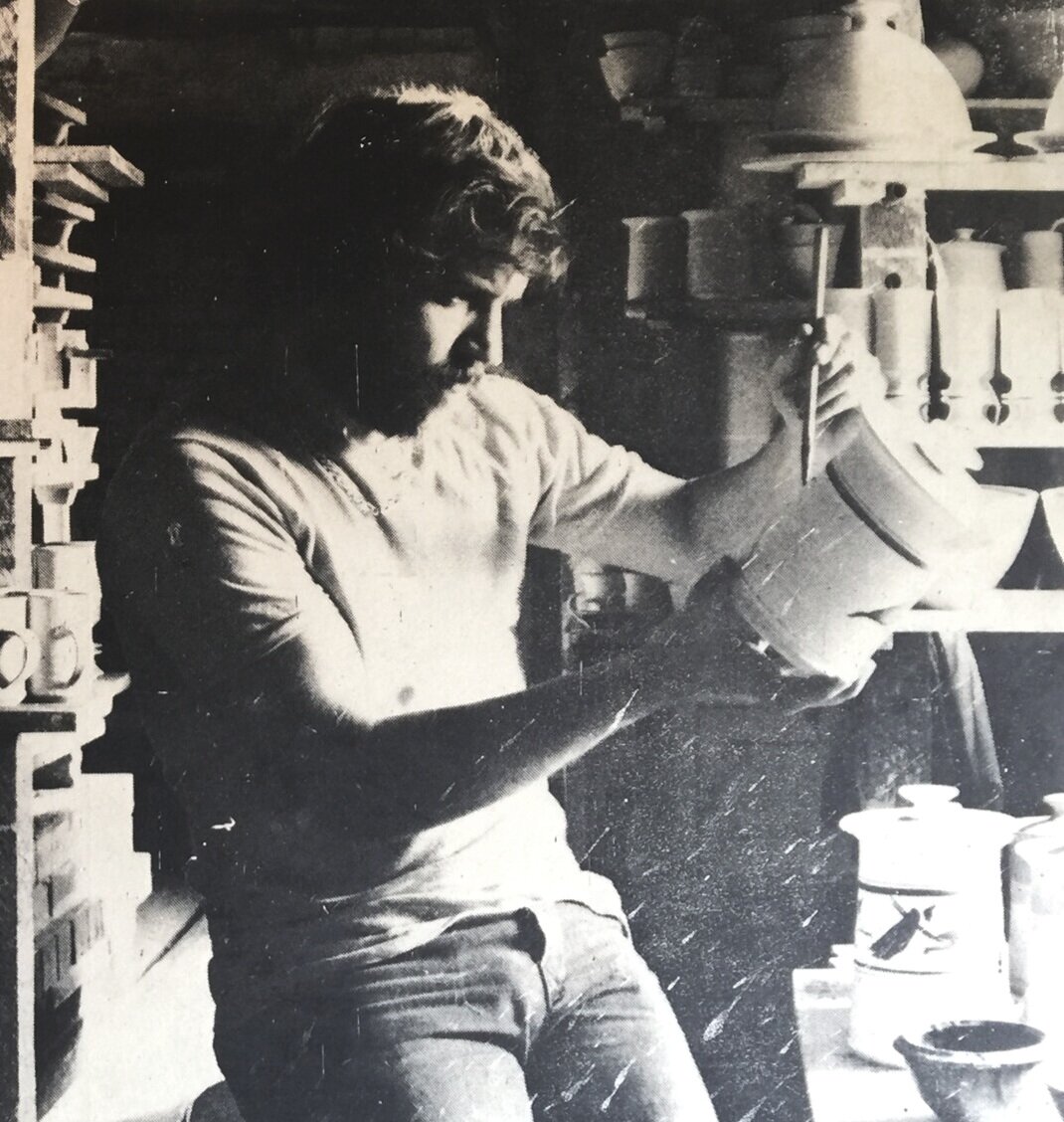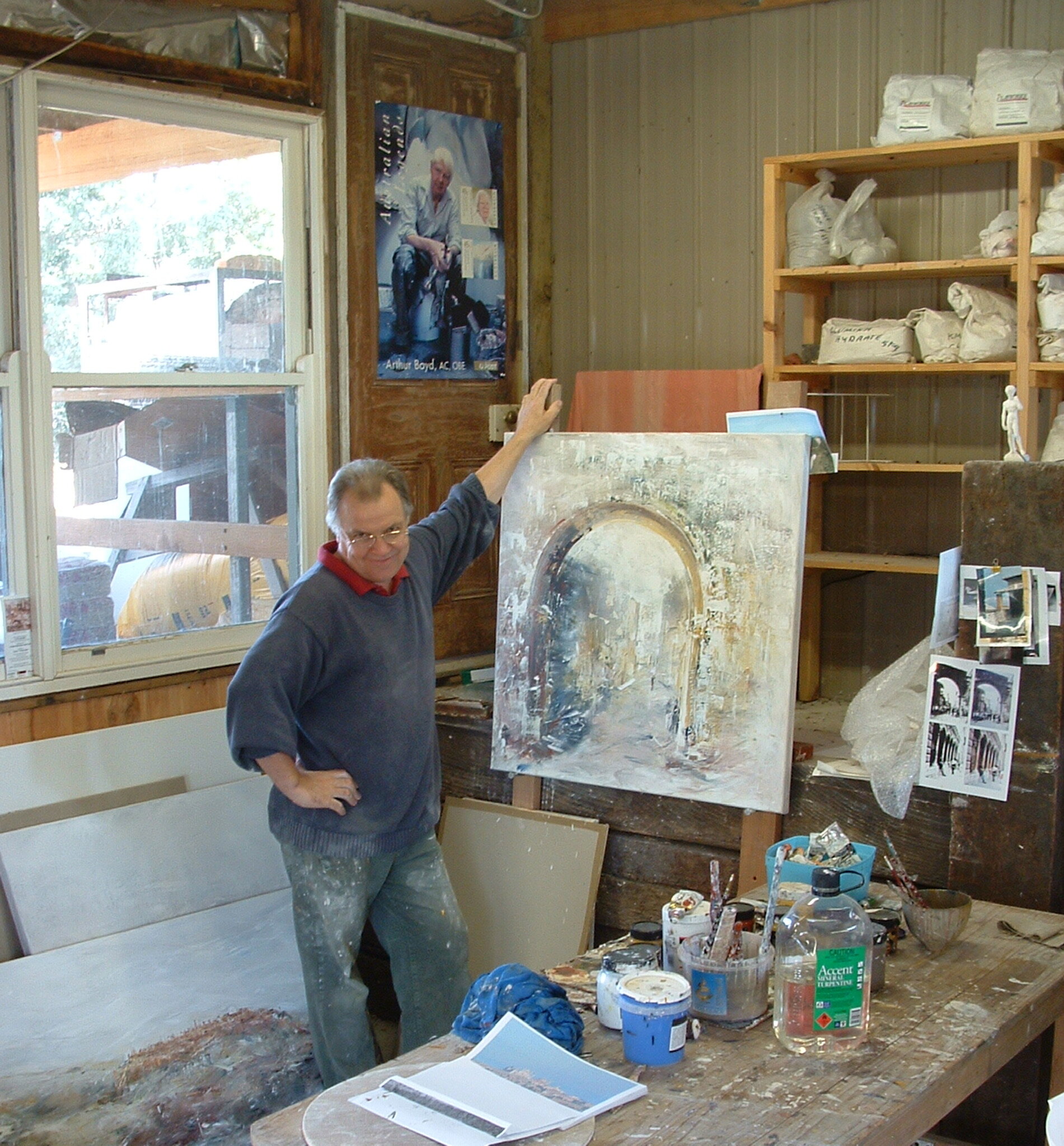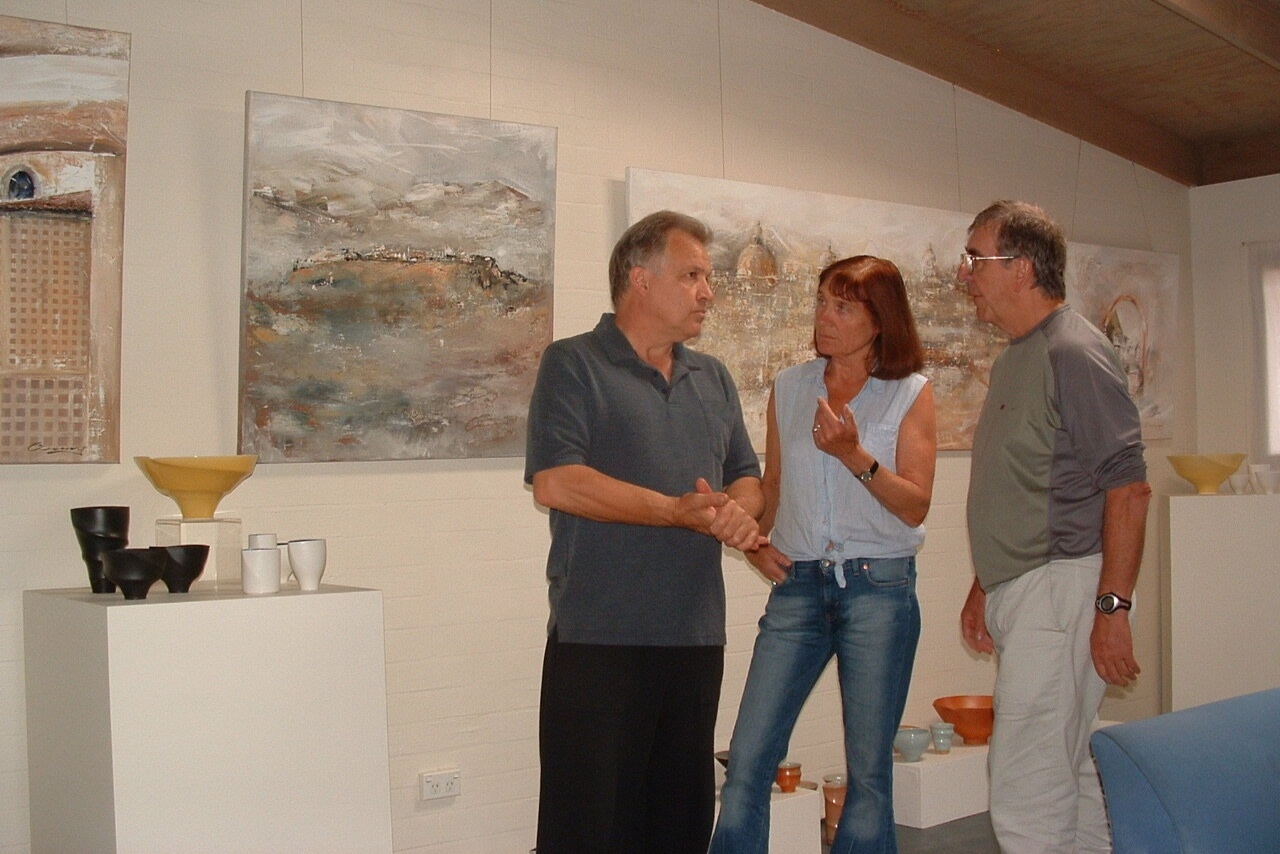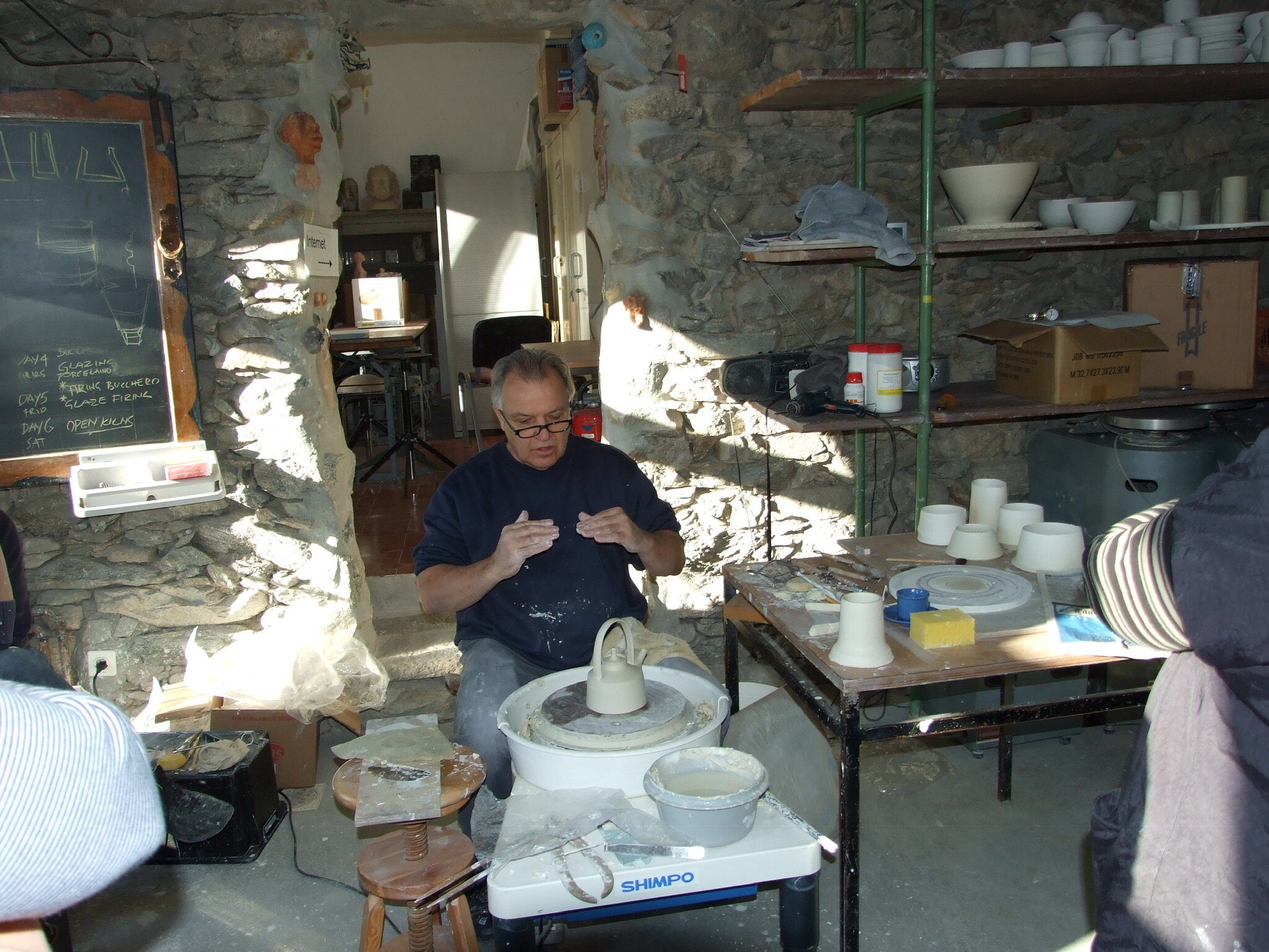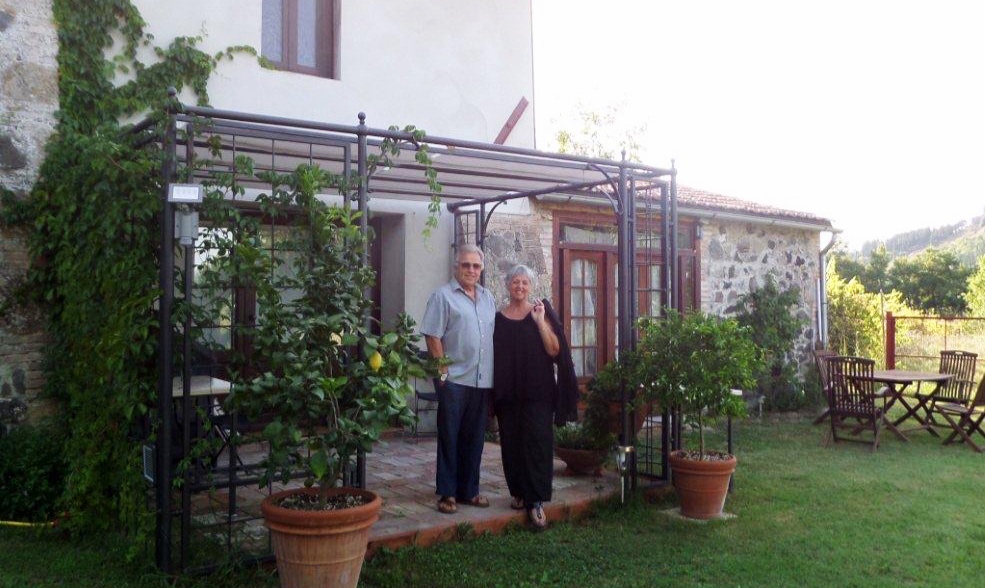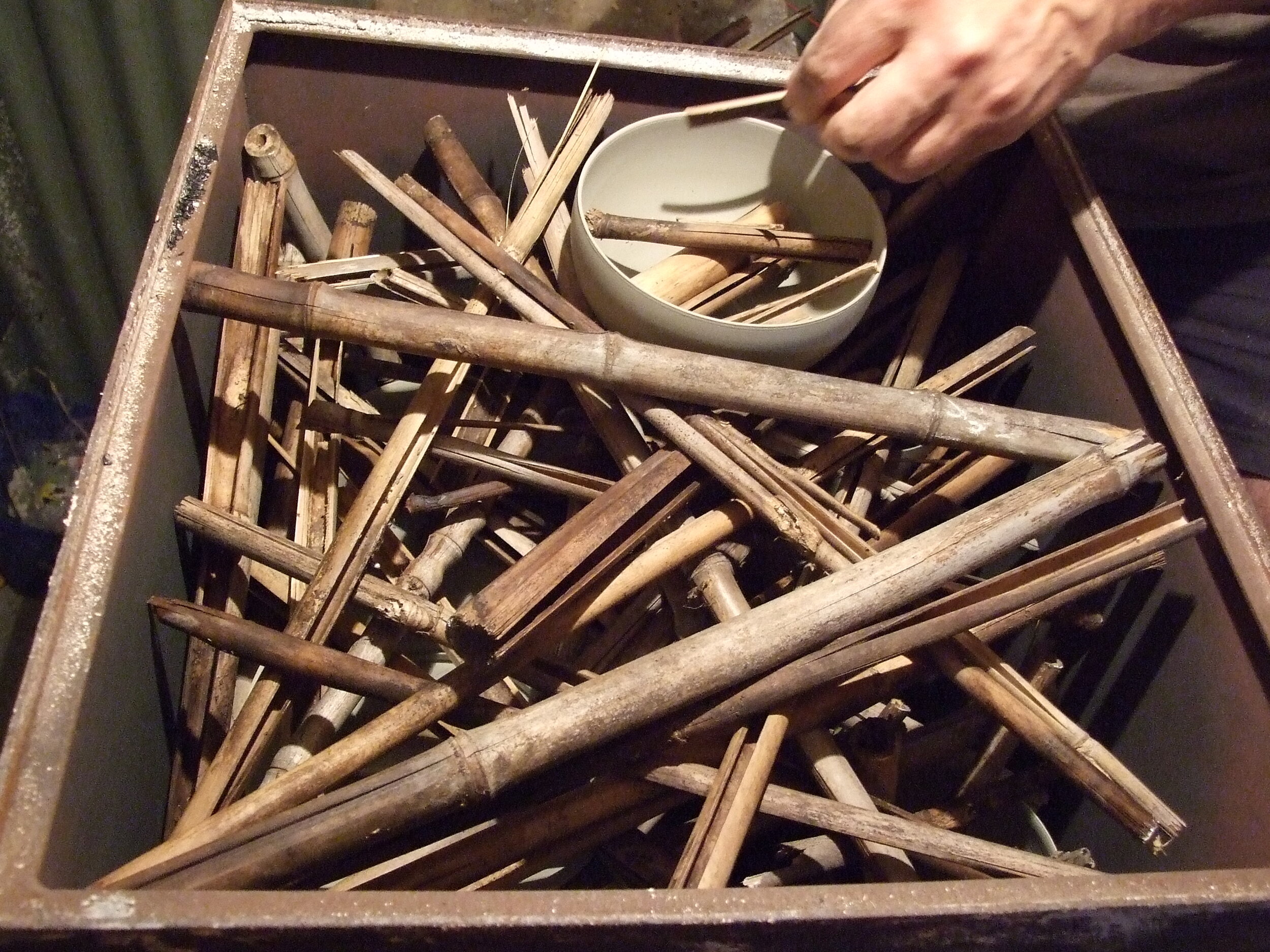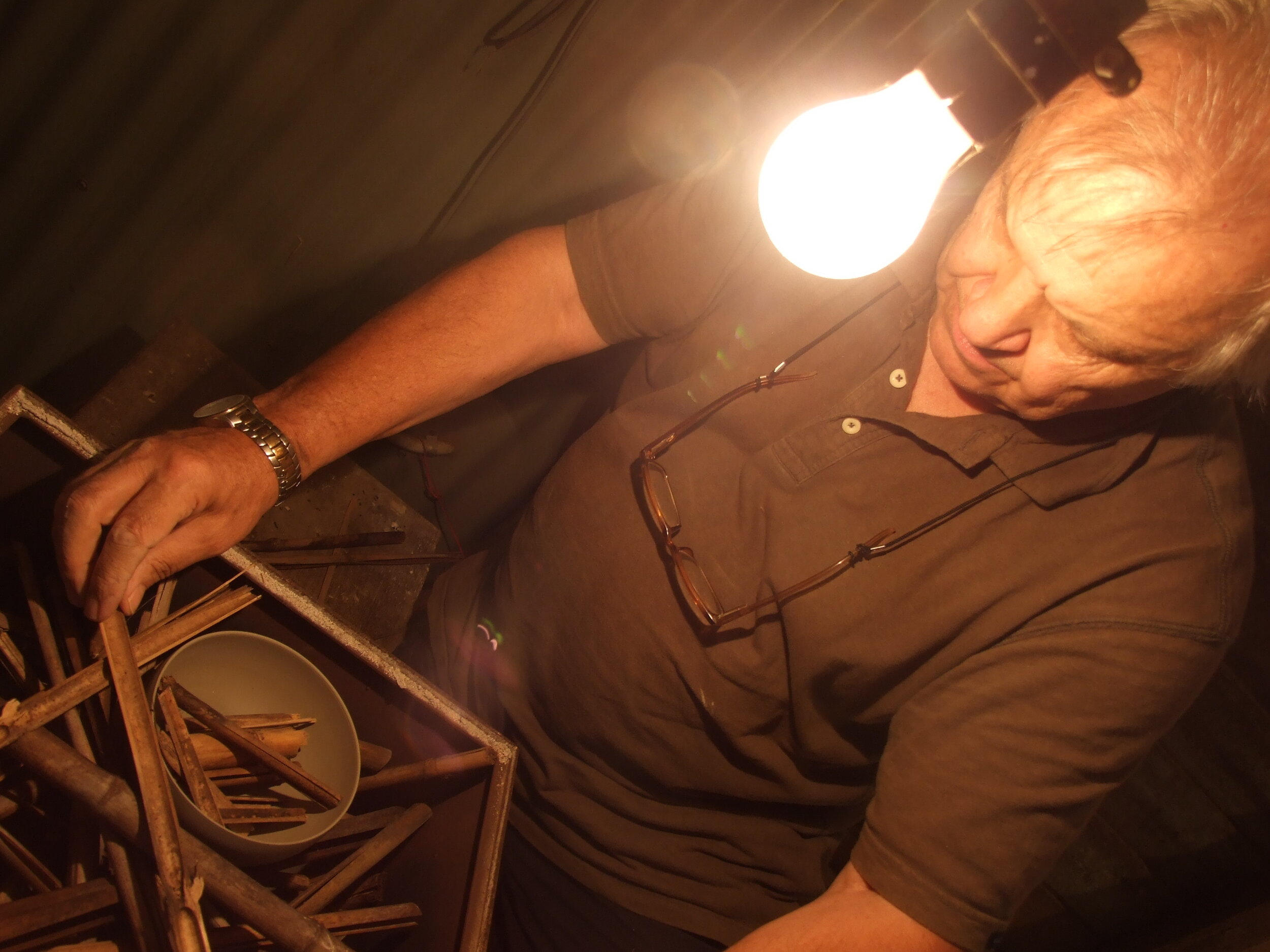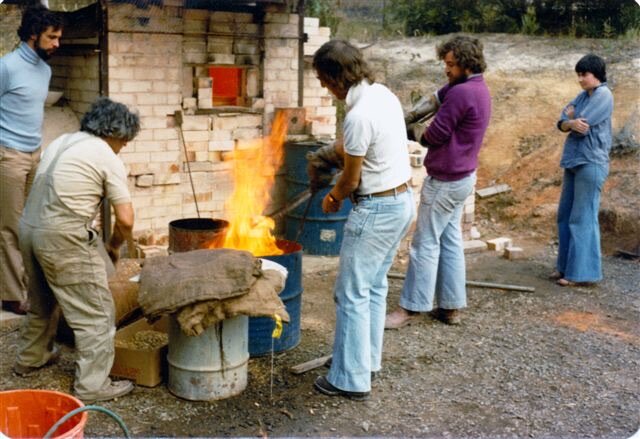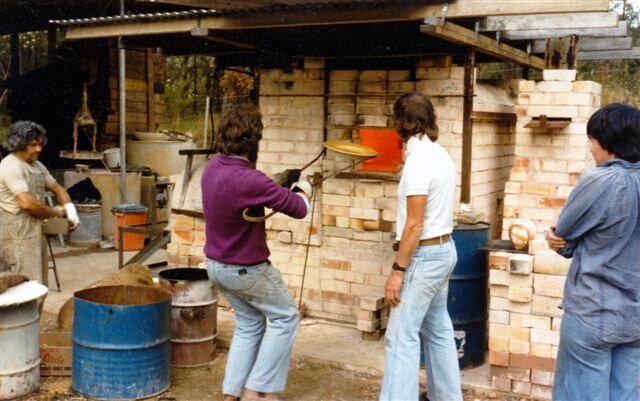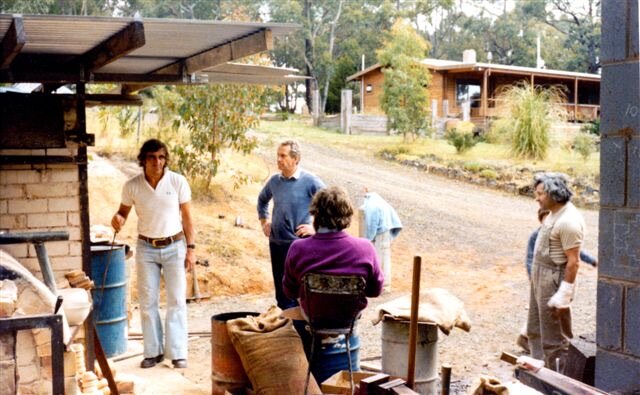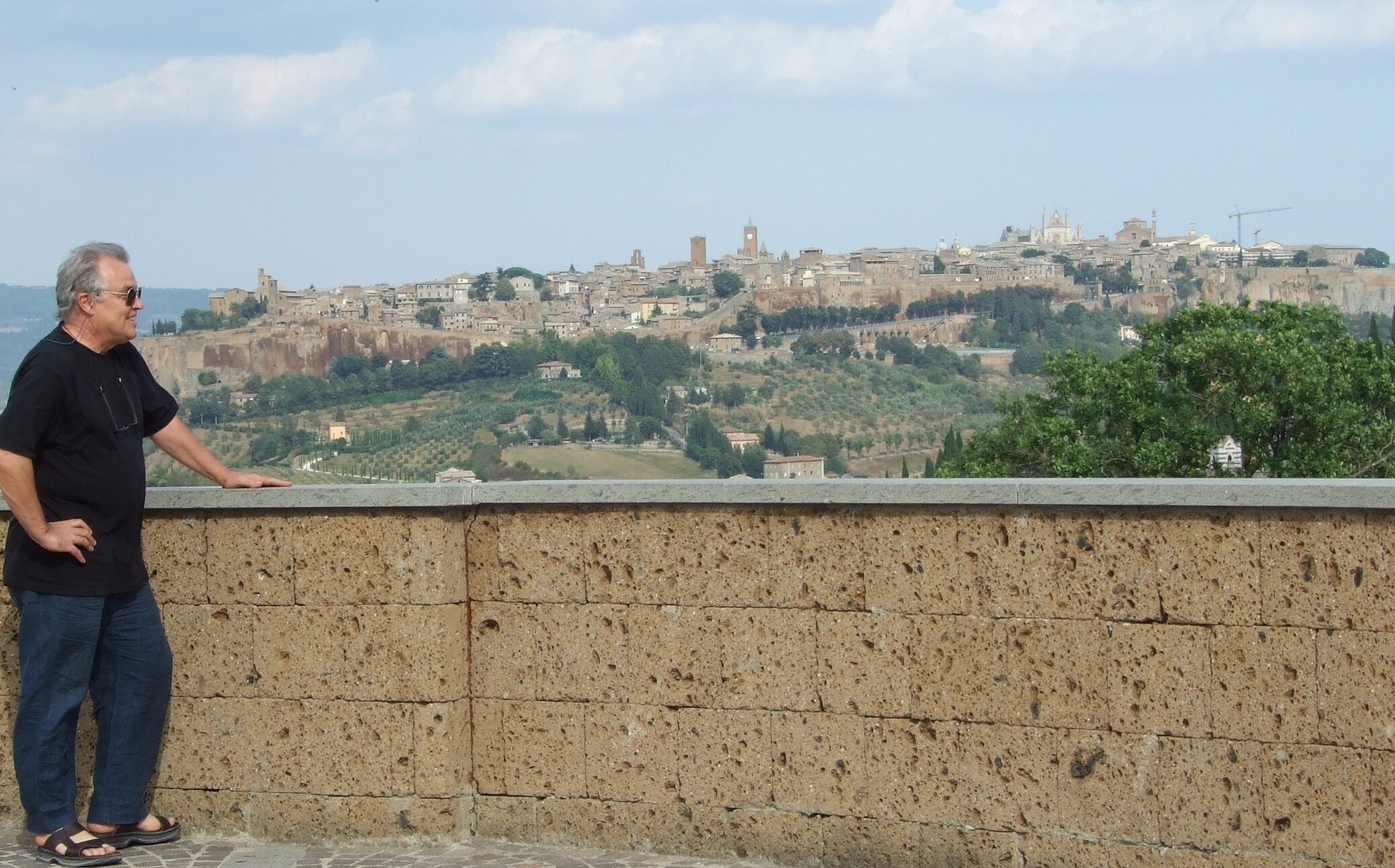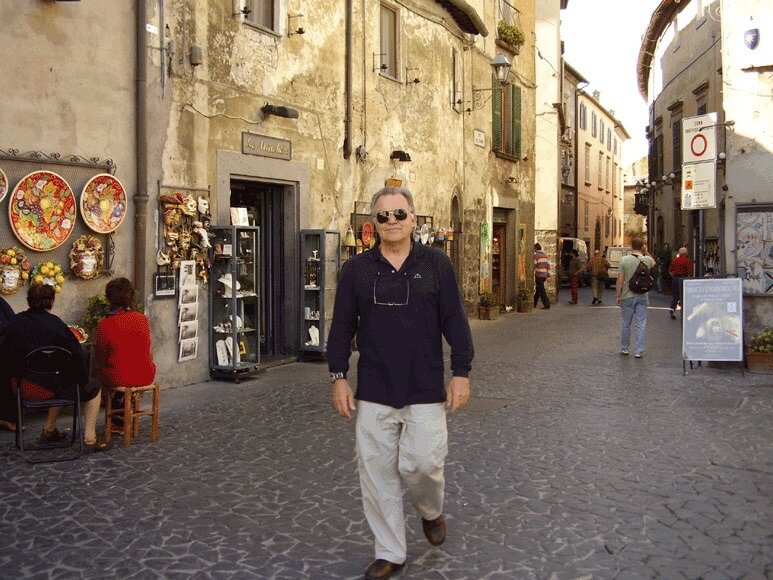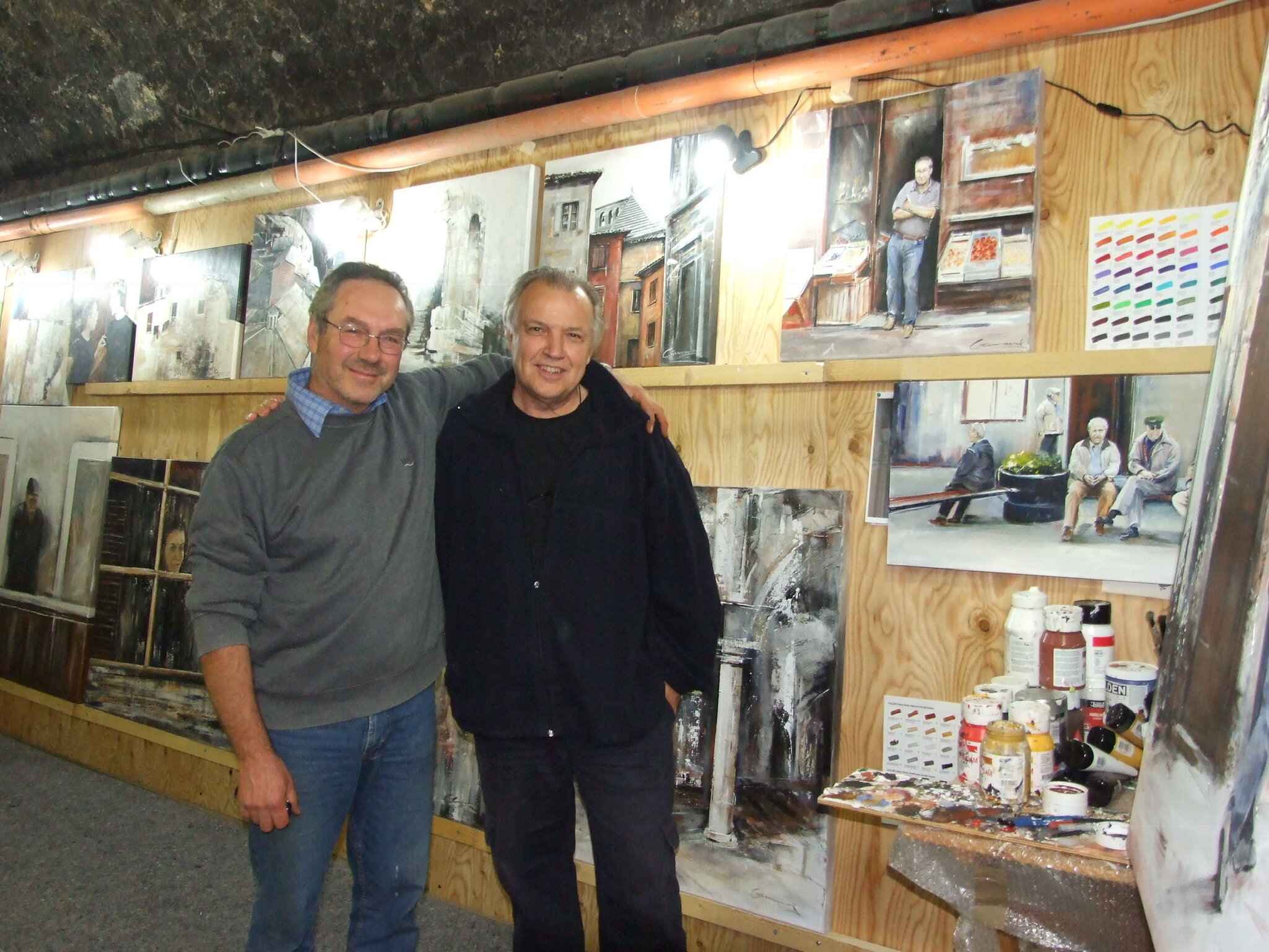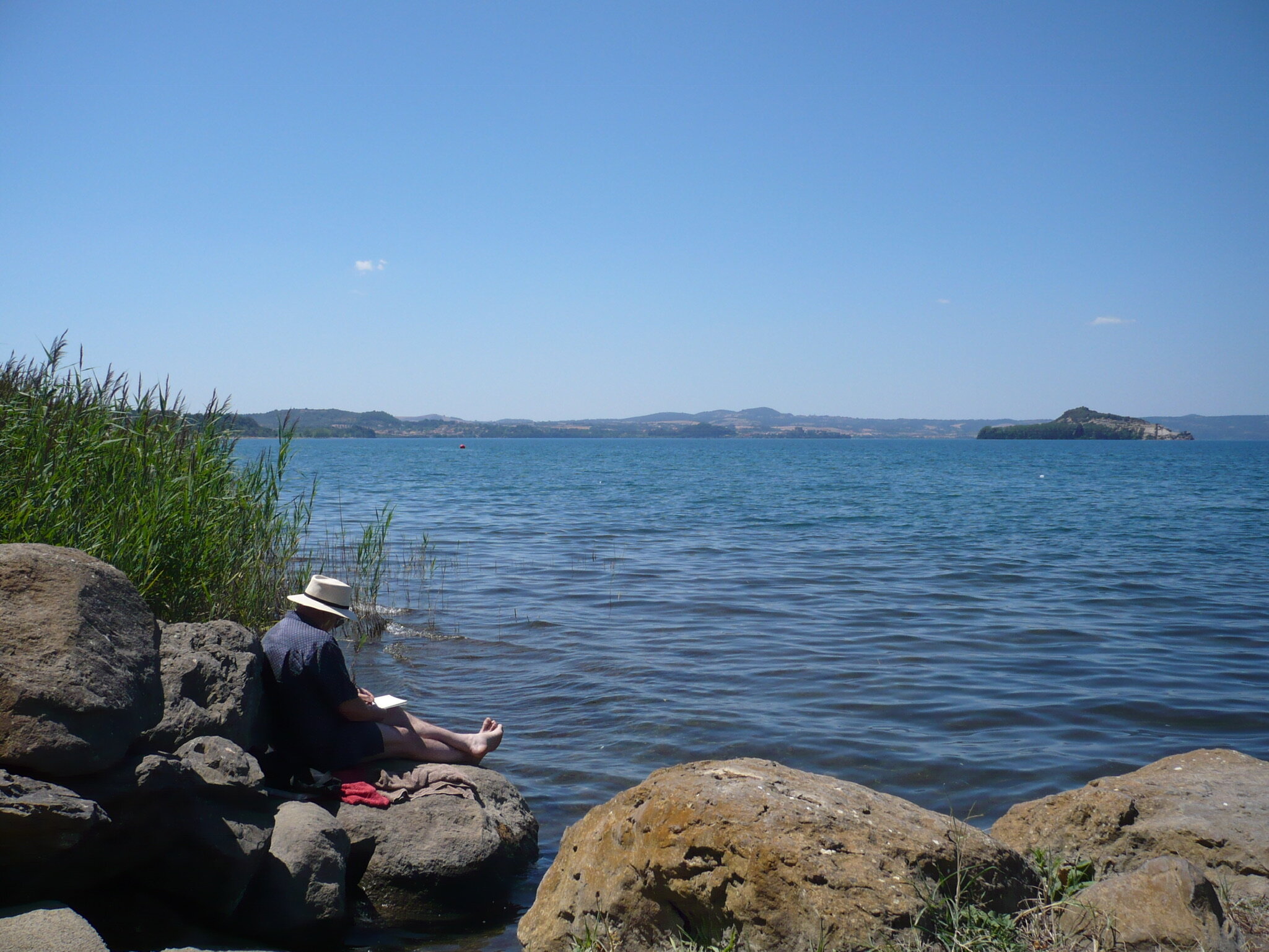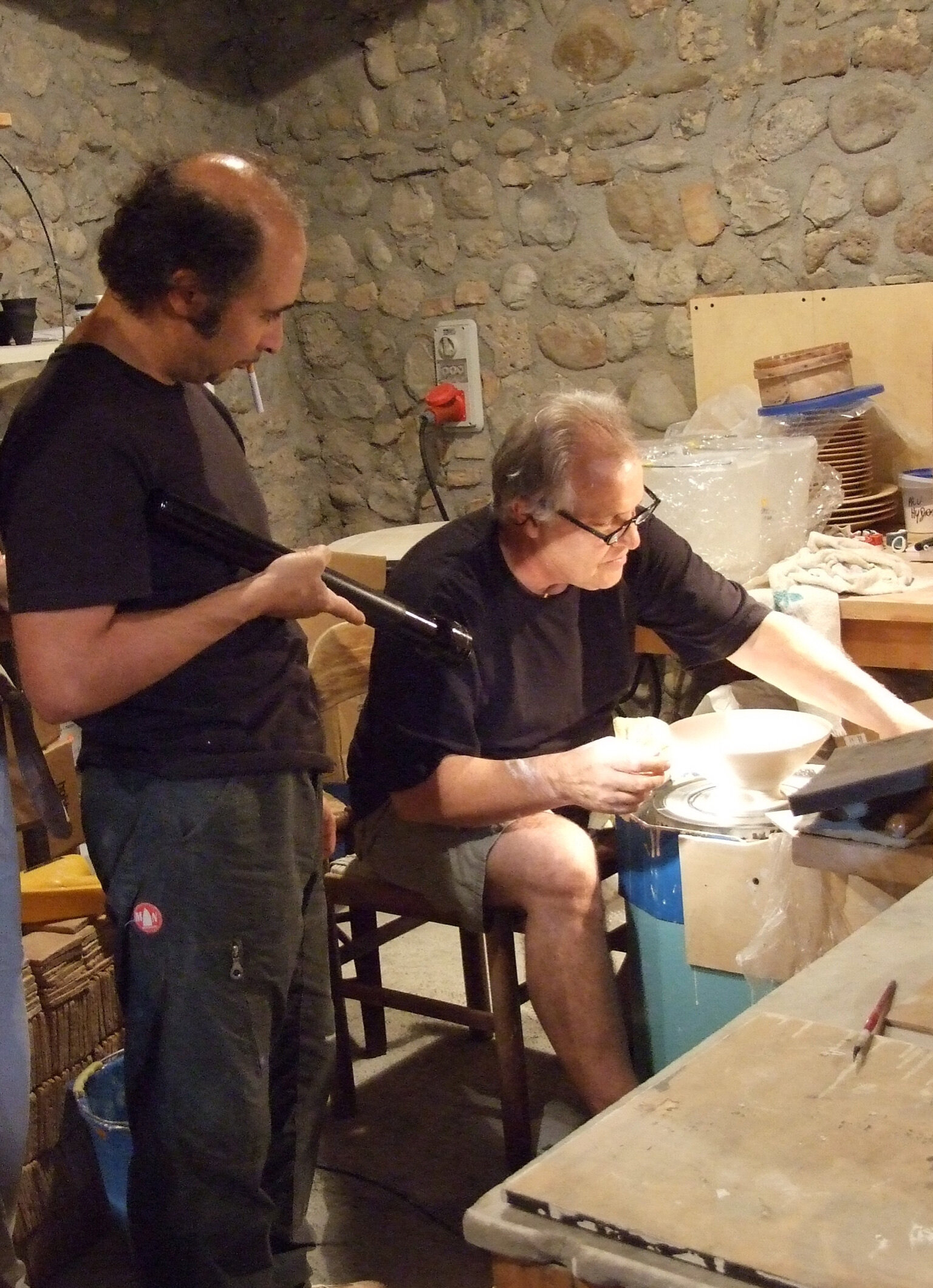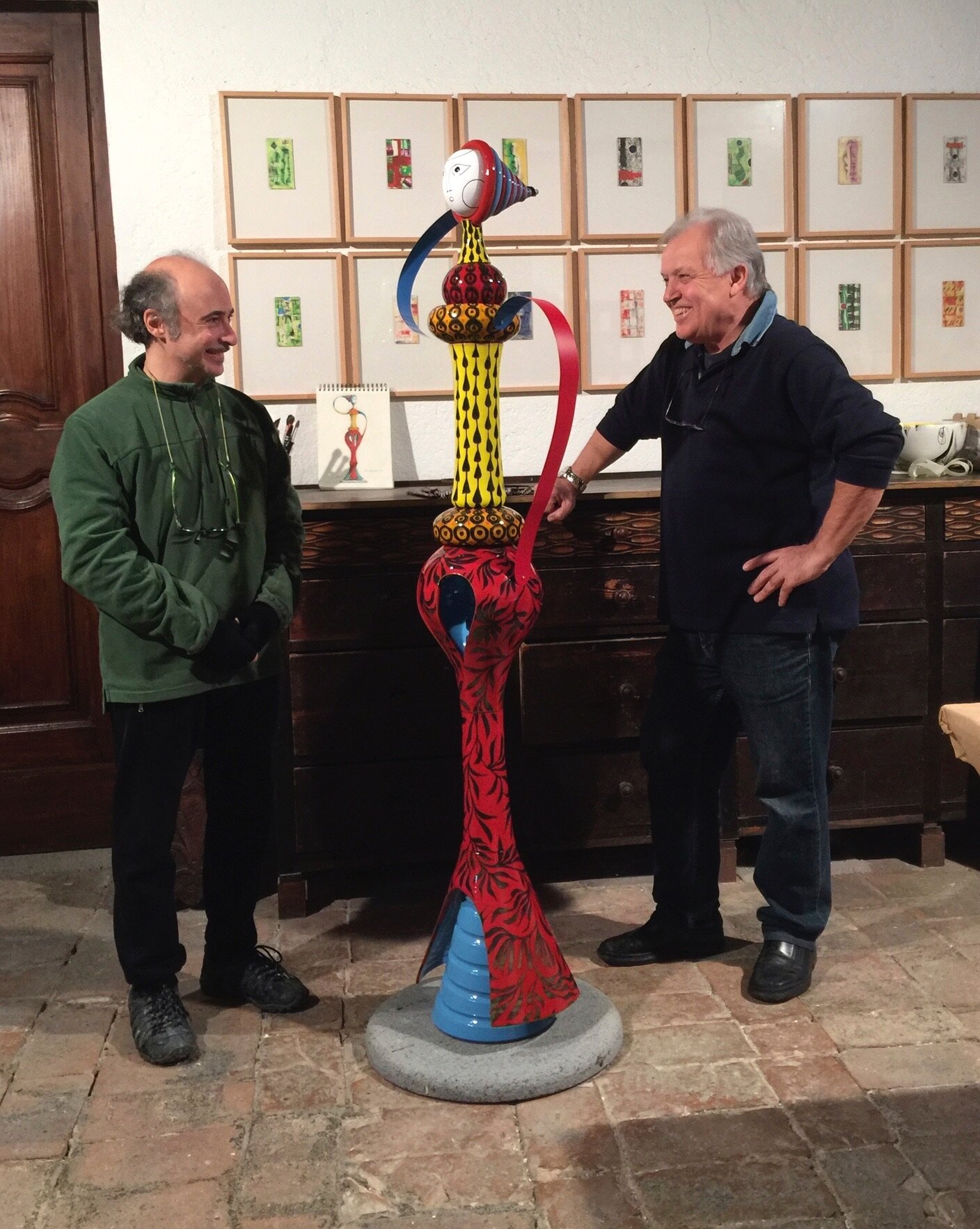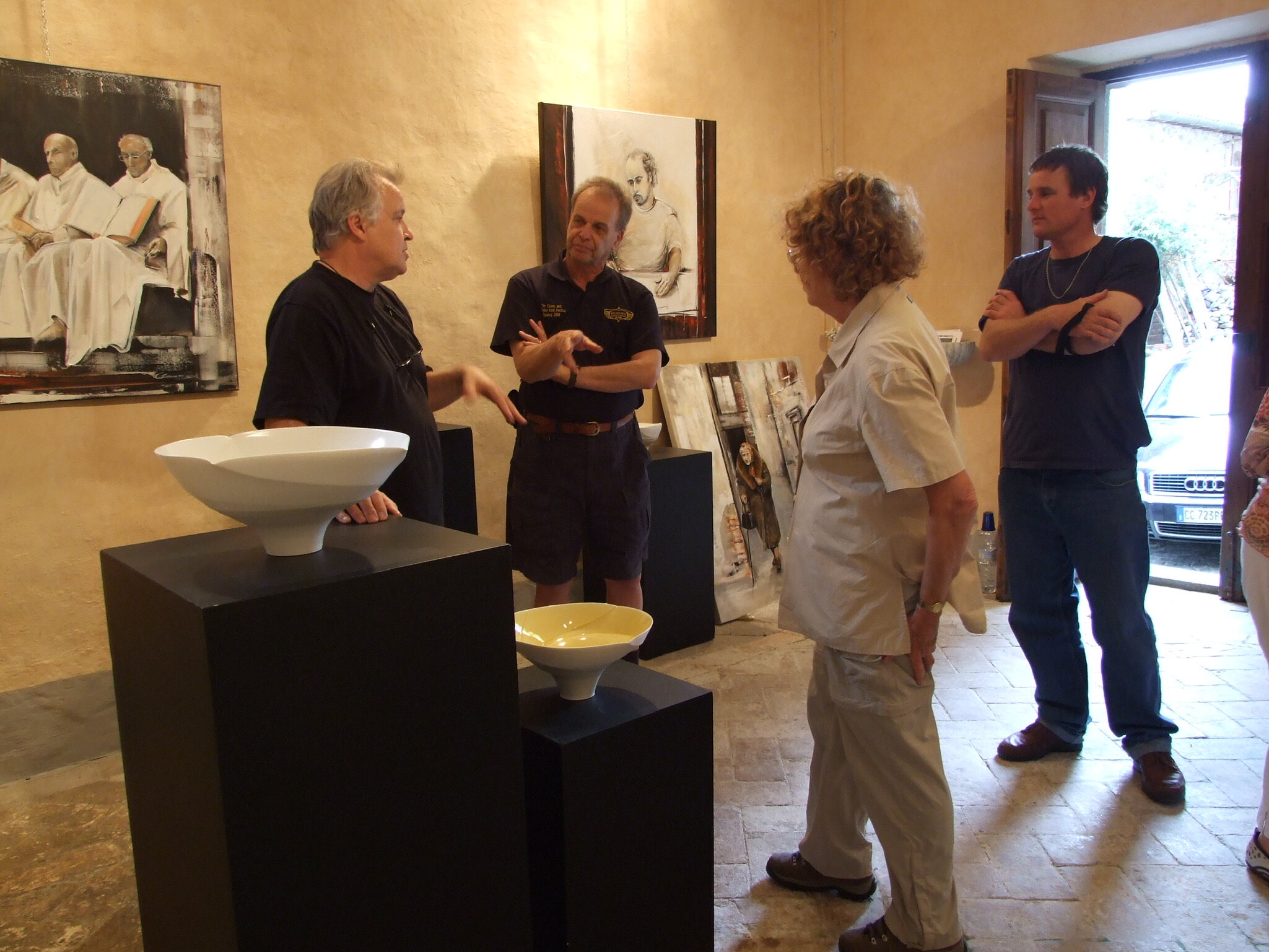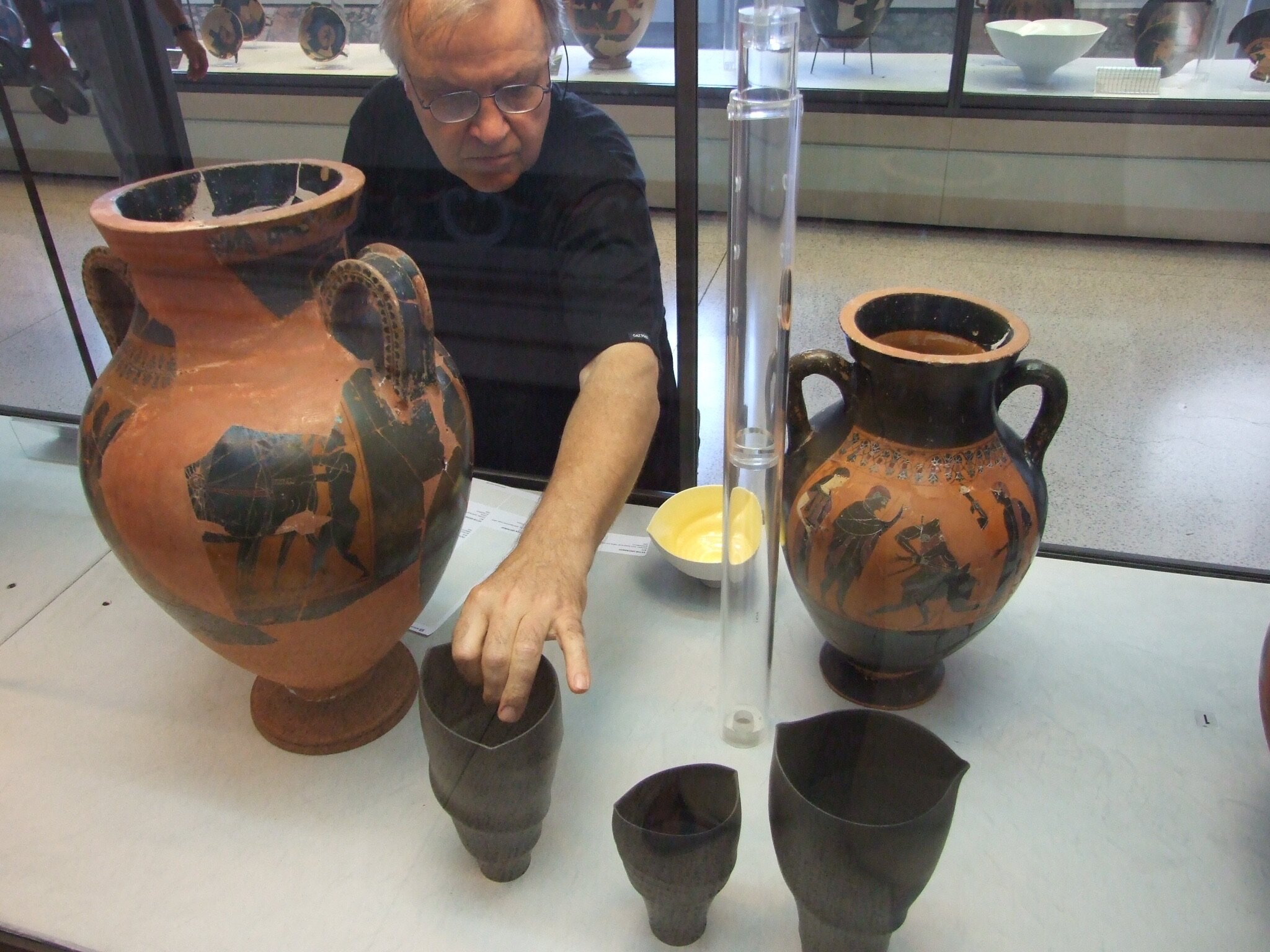About Victor Greenaway
Victor Greenaway is an internationally renowned ceramic artist represented widely in public and private collections worldwide. He has earned a reputation for fine craftsmanship and innovative ceramic design, receiving many prestigious awards over many years as well as widespread acclaim for his two-dimensional works on canvas and paper.
1968
Greenaway’s career as a professional potter commenced when he began an apprenticeship with Ian Sprague at Mungeribar Pottery in Upper Beaconsfield, in the Dandenong hills an hour from Melbourne. Across the six-year apprenticeship he learned all of the skills of a production potter – repetition throwing on the potters’ wheel, forming lid handles and spouts, glaze and clay technology, and firing kilns.
The visual delight of rows of stacked bowls and plates waiting to be fired in the kiln and his new-found throwing skills inspired the series of “split flanged forms” and “banded forms”. Greenaway was particularly interested in Scandinavian design, displaying clean lines and pure form, which was introduced into Australia during his student years in the early 60s’.
1974
A Churchill Fellowship for overseas study took Greenaway to Japan to work with Tatsuzo Shimaoka in Mashiko Machi. Learning the Japanese philosophy and work ethics within the studio led him to understand the complexity, and at the same time simplicity, of Japanese aesthetics – in particular, the asymmetries and spontaneity of form and decoration.
1975
Greenaway established Broomhill Pottery in 1975, on a property adjacent to Mungeribar. He built a traineeship program which was to run for 12 years, with support from the Crafts Council’s Australian Traineeship Program. The Broomhill production work reflected Greenaway’s interest in the pure design elements from the Scandinavians, coupled with the Japanese experience.
1980
A wood fired kiln was built at Broomhill and several exhibitions displaying wood fired pots followed. In this period, Greenaway’s work took on a new direction with controlled spherical forms on narrow bases – spontaneous brushwork, strength and stability.
In 1983 the family home was destroyed in the Ash Wednesday fires. The studio complex was saved, and during the next few years as his family rebuilt, Greenaway continued with the trainee program and domestic ware production. However, times were changing, and he would eventually go solo in the workshop to concentrate on developing individual collection pieces, subsequently averaging two major one man shows a year.
1993
In 1993 Greenaway and wife Judith sold the Broomhill property and moved into Melbourne. He was supervisor of the Meat Market Craft Centre Ceramic Workshop for the next three years, establishing the Victor Greenaway School of Ceramics that concentrated on teaching the “art of throwing” on the potters’ wheel. It was during the process of demonstrating the skills of throwing (showing how the speed of the hands in relation to the speed of the turning wheel will determine the outcome of lifting the clay walls into a cylinder) that he discovered the visual dynamics of spiraling clay, working the shape on the wheel. The subsequent work with spiraled and modified forms followed; a method refined across the next few years of collections. In this period Greenaway also purchased property in Nungurner, on the East Gippsland Lakes.
1994
The 1990s also involved a concentration on work with translucent porcelain and extensive experimentation with traditional Chinese celadons. Greenaway developed imagery on unglazed porcelain, in the form of pictures and painterly brushwork. This was in direct relationship with a new found interest in painting and two-dimensional work. He was producing watercolours on paper in this time, as well as ink drawings (monoprints using printers’ ink). This was to lead to a more serious painting career.
During 1994 Greenaway was Artist in Residence at the Sturt Ceramic Workshop in Mittagong, New South Wales, concentrating on porcelain pieces for wood firing.
1995
Greenaway established the Lakes Studio in Jetty Road, Nungurner, continuing the work with porcelain and developing the painting and drawing work using acrylics, oils and printers’ ink. A meeting with Italian Maiolica artist Marino Moretti proved to be momentous – leading to a lasting collaborative relationship that continues to this day, and a major shift in focus in Greenaway’s work.
1996
Greenaway joined Moretti in his studio at Viceno, Italy – the first of many visits. There, he was introduced to the technique of the Etruscan ceramic “Bucchero”, which became a significant addition to his ceramic work, acting as an interesting contrast to the high-fired porcelain. Establishing a collaboration with Moretti, they produced work together for various exhibitions in Italy and Australia. Greenaway helped set up a porcelain workshop space in Moretti’s studio, assisted by a Fellowship from the International Specialised Skills (ISS) Institute. Greenaway continued to work with Moretti on various visits overs the years producing porcelain.
2002
In 2002 Greenaway was awarded an Australia Council for the Arts Fellowship, a recognition of a long and impressive career and continuing creative energy. He was admitted to the 52nd International Competition for Contemporary Ceramic Art at Il Museo Internazionale delle Ceramica in Faenza, Italy, with exhibitions to follow across Europe and continuing to the present.
At the invitation of ceramic artist Patty Wouters, he spent time as Artist in Residence at the Atelier Cirkel, Braasckaat, Belgium. It was during this residency that he produced some of the most powerful forms and exciting glazes, partly due to the discovery of a new porcelain from Limoges in France and high temperature glaze stains from Italy that allowed further development of clear colour and purity in the glazes.
In 2005 fine art publisher Beagle Press produced a beautiful monograph celebrating Greenaway's forty-year career in ceramics.
2006
Selling the property in Jetty Road, Greenaway established a new ceramics studio on daughter Kylie’s property nearby. With Judith he moved to Italy to establish a painting studio in Orvieto, with the aim to develop skills as a painter. From time to time he also worked in Moretti’s studio to maintain contact with clay. He conducted master classes in porcelain in Switzerland, Italy, Belgium and Holland over the next 10 years. Returning to Australia for a couple of months each year, Greenaway produced porcelain for various exhibitions within Australia. This was primarily to keep in touch with clientele and agents, and to exhibit the ceramics alongside the paintings produced in Italy.
During his time of residence in Italy Greenaway made many visits to Venice. New porcelain forms were influenced greatly by these experiences. Imagery that chases abstract shapes around the form reflect the colours and carnival atmosphere of Venice. The surfaces arise from the smoothness of marble on classical forms that can be seen everywhere on the Peninsula.
2016
Returning to Australia in 2016, Greenaway built a new home, painting studio and ceramics studio in Nungurner. The Lakes Studios provide an environment in which Greenaway can divide time between the painting and ceramic disciplines. He continues the development of finely executed forms in the translucent porcelain of Limoges, as well as producing a range of complementary forms using the ancient Etruscan black-fired technique of bucchero. He also continues to develop his painting work, with large-scale oil and acrylic works that explore textures on canvas, and refined ink monographs.
Throwing a multi-banded stoneware bottle form, Mungeribar
Repetition throwing, producing port cups for the Broomhill Pottery domestic range


